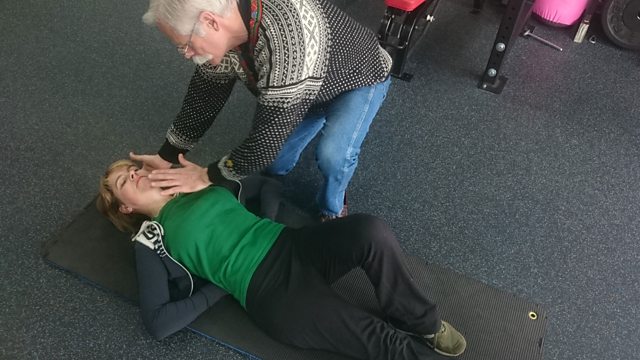Concussion Test
Concussion in sport is a serious issue and a blood test to spot such brain injury may be just five years away
American doctors say theyβre just five years away from a pitch-side blood test to spot concussion β which is an injury caused by a bang to the head or a sudden, strong jolt to the brain. Itβs a hot topic at the moment as experts debate when sportspeople should and shouldnβt be allowed back onto the pitch after a head injury. At the moment doctors still have to rely on looking out for symptoms such as vomiting, blurred vision, loss of balance or disorientation when considering a diagnosis of concussion. But researchers at the Orlando Regional Medical Centre in Florida have detected two substances which are released into the blood stream after a brain injury. Through this finding they hope to develop a simple blood test β a bit like those used by diabetics to test their glucose levels. Emergency physician Dr Linda Papa says that type of test could be just five years away and could help to decide whether to scan a patientβs brain.
Travelling by bus around different countries can be hazardous. More than a.2 million people are killed in road accidents around the world each year and three thousand of them are in Kenya. Matatus, which are little minibuses, are a popular form of transport cities like Nairobi. So in an attempt to make the travelling safer, passengers are being encouraged to speak out. A reminder comes in the form of Zusha! stickers on buses β a word which in Swahili means βcomplainβ. The stickers remind passengers that itβs ok to talk to the driver if they think their driving is unsafe. The people behind the campaign say 3 out of 10 matatu accidents could be prevented if passengers spoke out.
The sit up β which has long been a mainstay of military and leisure exercise programmes β is having a makeover. Stuart McGill is a professor of spine biomechanics at the University of Waterloo in Canada. Heβs recently written the book, the Back Mechanic, and has been researching the impact of sit ups on the spine for many years. He says that the βstandardβ sit up β where the hands are placed behind the head and the lower spine is βpushedβ into the floor β puts the back under a lot of strain. This increases the risk of injury and potential back pain β and those with thicker spines like rugby players being particularly at risk. Professor McGill suggests instead that the hands should be placed, palm-down, under the lower back, and bending just one leg β keeping the other straight. Only then should the head be lifted up, by a tiny amount. He explains how researchers like him use pig cadavers to replicate the strain placed on human spines. The shape of a disc in the human spine dictates how it might bulge or fail β knowledge which came from such animal studies.
Photo: Claudia doing sit-ups. Photo:ΒιΆΉΤΌΕΔ
Last on
More episodes
Broadcasts
- Wed 20 Apr 2016 21:32GMTΒιΆΉΤΌΕΔ World Service except East and Southern Africa & News Internet
- Thu 21 Apr 2016 01:32GMTΒιΆΉΤΌΕΔ World Service Americas and the Caribbean
- Thu 21 Apr 2016 02:32GMTΒιΆΉΤΌΕΔ World Service UK DAB/Freeview, Online & Europe and the Middle East only
- Thu 21 Apr 2016 03:32GMTΒιΆΉΤΌΕΔ World Service South Asia & East Asia only
- Thu 21 Apr 2016 04:32GMTΒιΆΉΤΌΕΔ World Service Australasia
- Thu 21 Apr 2016 06:32GMTΒιΆΉΤΌΕΔ World Service Europe and the Middle East & East and Southern Africa only
- Thu 21 Apr 2016 14:32GMTΒιΆΉΤΌΕΔ World Service except News Internet
- Sun 24 Apr 2016 19:32GMTΒιΆΉΤΌΕΔ World Service East and Southern Africa
Podcast
-
![]()
Health Check
Health issues and medical breakthroughs from around the world.


